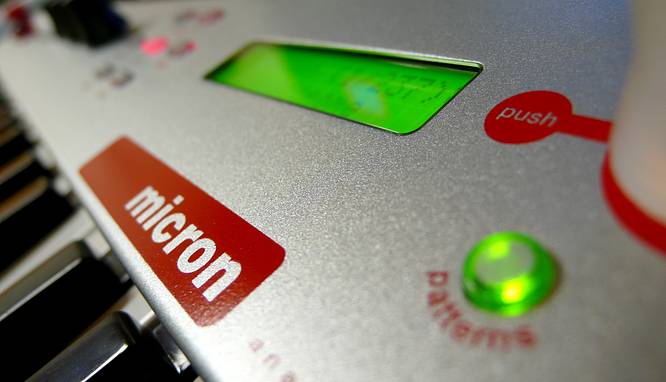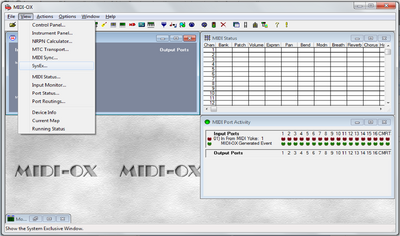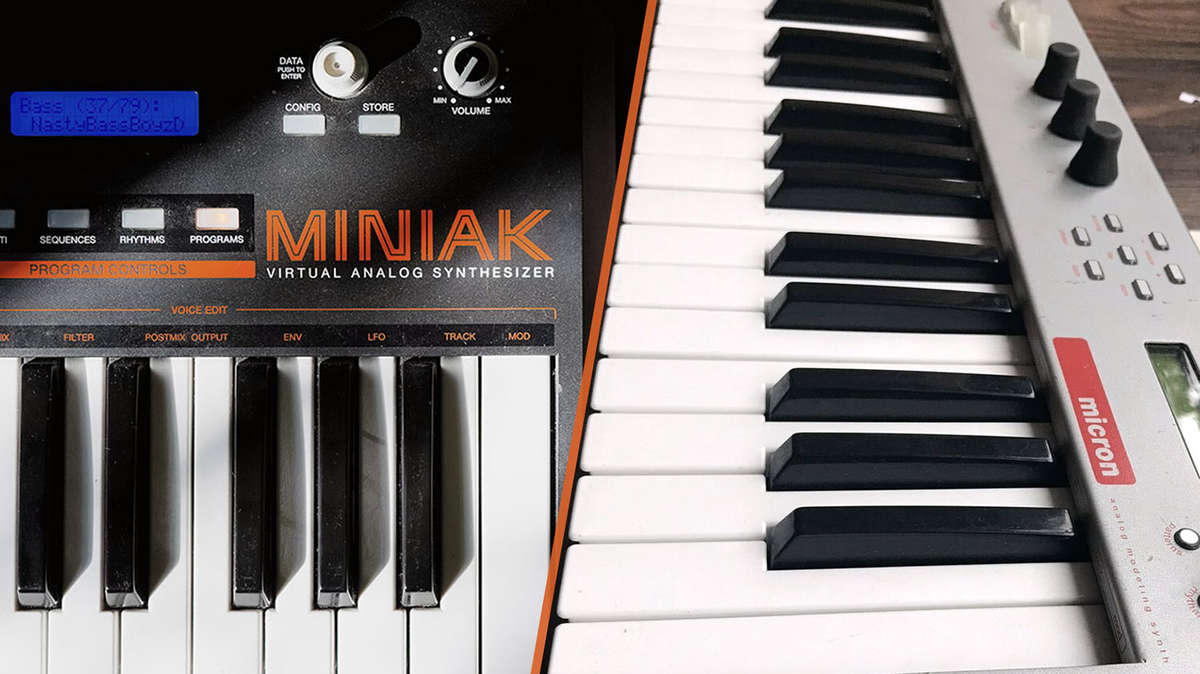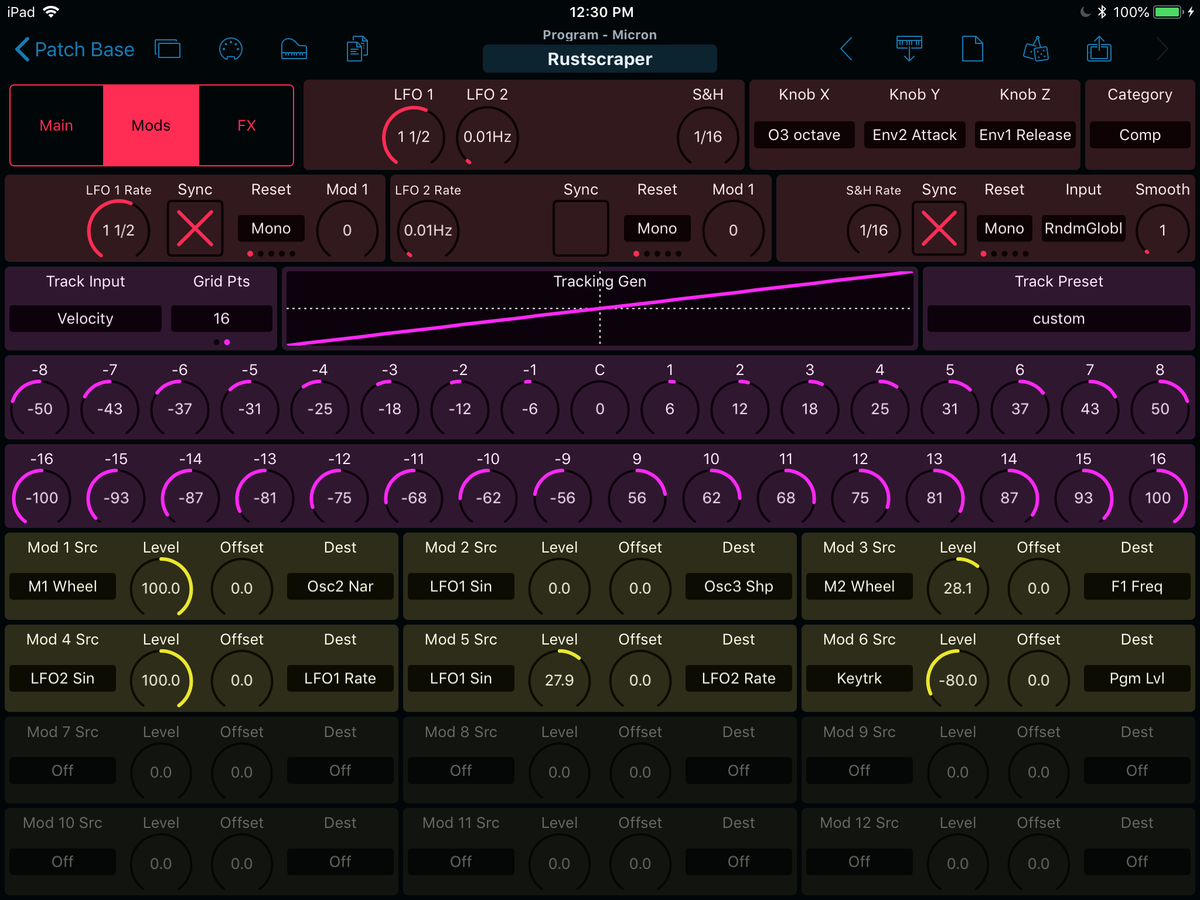Product Overview:
- Alesis Micron Patch List
- Alesis Micron Used
- Alesis Micron Patch List
- Alesis Micron Factory Patches
- Alesis Micron Guitar Center
- Alesis Micron Demo Mp3
- Alesis Micron Wiki
Alesis Micron Patch List
Ion-editor is a software editor for advanced controlling over the famous Alesis ION and Micron analog modeling synthesizers in your DAW. Ion-editor offers intuitive user interface and it emulates ion LCD display graphics for parameters that need more descriptive information like envelope curve, filter balance, mod matrix and tracking generator. (Latest release v2.2)
Main Features:
- Support automation for all Ion/Micron parameters
- Request patch from Ion/Micron memory
- Load sysex file into the editor
- Send sysex (on the fly) to selectable locations (bank-program)
- Save editor program (in sysex format)
- Save Ion/Micron program remotely (in sysex format)
- Select Ion/Micron program and bank remotely
- Rename program name and category of a sysex file
- Intelligent randomizer
- Easily tweakable interactive tracking generator and mod matrix
- Graphical and numerical readout for envelopes
- Graphical readout for 'pre-filter mix' balance
- Readout for filters freq, LFO/S&H rate, portamento time (Alesis exp scale)
- Sync to host option for master tempo
- 2 Selectable skins
- MIDI Learn function for most of the parameters
- Direct connection to Nintendo Wii Remote as MIDI controller
- Run as standalone or 32bit VST plugin
Minimum System Requirements:
Processor: Pentium III/AMD with SSE or SSE2 support
Processor speed: 1200 MHz
RAM: 256 MB RAM
OS: Windows XP / Vista / 7 / 8 / 10 (32/64 bit)
Host application: VST Compatible Host Software
| Limitations: 1- LFO(1,2,S/H), voice part, envs, effects and 'sysex tools' are disabled. 2-The program is active for ten minutes. 3-Only available as standalone. |

Note: for full operation of Patch Base's Micron Librarian, an unsupported firmware update is necessary to your Micron. The patch editor will work without this update, but not the TOC/Bank editors. Performing this firmware update is at your own risk. I can only say that I've done it myself without problems. This is a very special case for Patch Base. Please read the following to fully understand the requirements for using Patch Base with your Micron:
I initially made editors for the Alesis Micron and the Akai Miniak at the same time. My understanding was that these two synths are essentially exactly the same. The Miniak (released in 2009) is just a re-packaged version of the same internals as the Micron (released 5 years earlier in 2004). I developed the editors testing only on the Miniak. This was a mistake on my part.
Feb 16, 2015 Alesis Micron (Akai Miniak) - Patch a Day blog Post by ghostly606 » Mon Feb 16, 2015 10:56 am After a 5 year hiatus my Micron Patch a Day blog is now back up and running.
As it turns out, the two synths are the same internally (as far as I can tell). But, the last official firmware released for the Micron (version 1.10) does not support fetching the Table of Contents (which gives information on names and locations of saved patches on the synth). This feature was only added in the Miniak's (newer) firmware, (version 1.0). So, the Micron simply doesn't have the ability to do external bank organization the way that the Miniak can. With the official Micron firmware, I don't think it's really possible to make a good bank organizer, because of the older firmware's limitations.
- Edit: btw - to load/save these patches to your ion, i have been using a combination of the ion librarian, and midi-ox. The ion librarian can be found on the ion and micron yahoo group, which I would really recommend joining - there are loads of extra patches and tips on programming etc on there.
- 1 How do I transfer patches to the Ion/Micron? 1.1 MIDI interface and cables 1.2 Software and setup 1.3 Troubleshooting 1.4 Sending from Ion/Micron to computer 2 Are there any good piano sounds for the Ion/Micron? 3 Software editors 4 MIDI implementation 5 NRPNs 5.1 How do I send a NRPN? 5.2 Hardware controllers To do this you will need: A MIDI interface on your computer A MIDI cable.
However (and here's where we get unofficial!), it is possible to take the Miniak version 1.0 firmware file and load it onto the Micron. I've done this a couple of times, and it works without issue except that several buttons get swapped in their functions:
- 'config' becomes the Rhythms button, and vice versa
- 'setups' becomes the Patterns button, and vice versa (and Setups are now called 'Multis' to match Miniak terminology)
- 'phrase' becomes the Tempo/Tap button, and vice versa
- 'accomp' becomes the Store button, and vice versa
Functionally, your Micron becomes a Miniak. These two synths have always had identical synthesis engines anyway. For safety's sake, I've also verified that it is possible to load the older Micron firmware back onto the Micron even after you've loaded the Miniak firmware. So I'm 99% sure that doing this is totally safe and reversible.
If you do this firmware update, then the editor and bank organizer in Patch Base fully works. Of course, this is not ever talked about or recommended by Alesis/Akai, and I doubt they would recommend doing this. It would be great if Alesis had released a version 1.2 firmware for the Micron that brought it up to par with the Miniak, but by 2009 I doubt Alesis was thinking about the Micron anymore. The last firmware update for the Micron was released in September 2005, 4 years before the release of the Miniak!
If you want to load the Miniak firmware onto your Micron

- You can download the Miniak 1.0 firmware sysex file here. You want the file named Miniak_os_v100.syx.
- Turn on the Micron while holding down the Programs and Setups buttons, and the screen should show a message saying it's ready to receive an OS update over MIDI.
- Send the OS sysex file to the Micron from a computer. I used Sysex Librarian on my Mac to send it. The one catch is I had to set the speed limiting on Sysex Librarian to about 50%. Otherwise the data gets sent too fast; that doesn't break anything, it just means the Micron will act like it never got a full copy of things (and nothing will update, so you'll have to try again).
- Restart the synth. When turning it on, the screen should briefly read 'Akai Pro Miniak' each time it starts up.
If you want to revert to the older Micron firmware, simply download the official Micron firmware and do the same OS loading process again. Version 1.10 of the firmware (the last official Micron update) is available on the same page linked above. The file is named q02_os_v110.syx.
Alesis Micron Used
In general, Patch Base is always made to work with your synths as they are. With the Micron I'm doing things differently simply because this is a really powerful synth that is really limited by its official firmware, and I haven't found any real downsides to this 'hack' that I've found. I welcome anyone's feedback and stories of personal experience with this, and will update this page if anything changes.
MIDI Setup
- Turn off Memory Protect: Press the 'Config' button the synth, the use the Data knob to get to 'Store: Protect'. Click the knob, the change the setting to 'off'. This allows Patch Base to write to the synth's memory, which is necessary for normal usage of the editor
- Set MIDI Channel: Open the 'Global' tab/window in Patch Base, and make sure the MIDI Channel setting matches the MIDI Channel setting of the synth. You can find the MIDI Channel by clicking 'Config' then navigating to 'MIDI: Channels' and see what channel the synth is set to 'start at'
- Turn on Send/Recv Pgm Change on the synth: Patch Base both listens to and sends Program Change messages to the synth in order to operate properly. Click 'Config' and navigate to 'MIDI: Pgm change' and make sure this setting is 'on (send+recv)'
- Use 'Programs' mode: Patch Base currently only edits and organizes the Programs on your Micron. Multis, Sequences, and Rhythms are not (yet?) supported.

Editing Patches

Because the Micron does not offer a way for external editors to fetch the current edit buffer on the synth (without knowing which patch is being edited), Patch Base uses a workaround: Patch Base designates 1 slot on your synth's memory as a sort of 'scratch pad' where it stores the patch you're working on. By default this is slot 127 in bank 7 on the synth, but you can change this to whatever you'd like in the 'Global' tab/window of Patch Base. Just be careful not to set this 'Write' location to a location that stores a program you want to keep safe.
While this approach is a bit 'weird', it also gets around a couple of limitations that almost all Micron editors in the past faced: with Patch Base, you can add additional 'Mods' to your patch via the editor, without adding them on the synth first. Also, you can change the name of a patch from the editor as well.
Alesis Micron Patch List
Similarly, Patch Base has a 'Fetch' location setting (also in 'Global') that determines which Program will be fetched from the synth when you tap the Fetch button in Patch Base; generally, you don't need to set this manually; Patch Base will listen to messages from the synth to know which Program is currently being played, and should keep things in sync for you so that you can just tap the 'Fetch' button whenever you want to start editing the current selected sound.
Fetching Program Banks (from synth to Patch Base)
The Micron has a non-traditional structure to its Program Banks; some parts of a Bank can be 'empty' rather than having a patch in them. In order for this structure to work with Patch Base, a small workaround has to be used. To Fetch Program Banks from your synth into Patch Base:
Alesis Micron Factory Patches
- Open the 'Program TOC' tab/window in Patch Base. If you have not fetched this info before (the Table of Contents of all programs on the synth), you will see a message asking you to do so.
- Tap the Fetch button. You must fetch the Program TOC before you can successfully fetch banks from the synth. The transfer may take a few seconds, but once it completes you will see 'XXX Programs on synth' in the window, where 'XXX' is the number of Programs currently stored on your synth.
- Open one of the 'Pgm Bank' tabs/windows. You can now fetch banks individually from the synth. Please note that any empty slots in the bank on the synth will be filled by Patch Base with a copy of an existing patch.
Patch Base manages Programs on your synth according to their Bank/Patch location on the synth. When you scroll through sounds on the Micron itself, they are presented in alphabetical order; not the order they are stored in the banks. If you ever want to know the Bank/Patch location of a sound you're playing on the synth, just press and hold the 'Programs' button on the synth, and it will be displayed on the screen.
Alesis Micron Guitar Center

Alesis Micron Demo Mp3
Related Pages
Alesis Micron Wiki
- Alesis Micron Editor in Patch Base
Comments are closed.